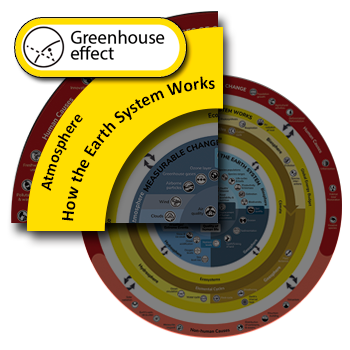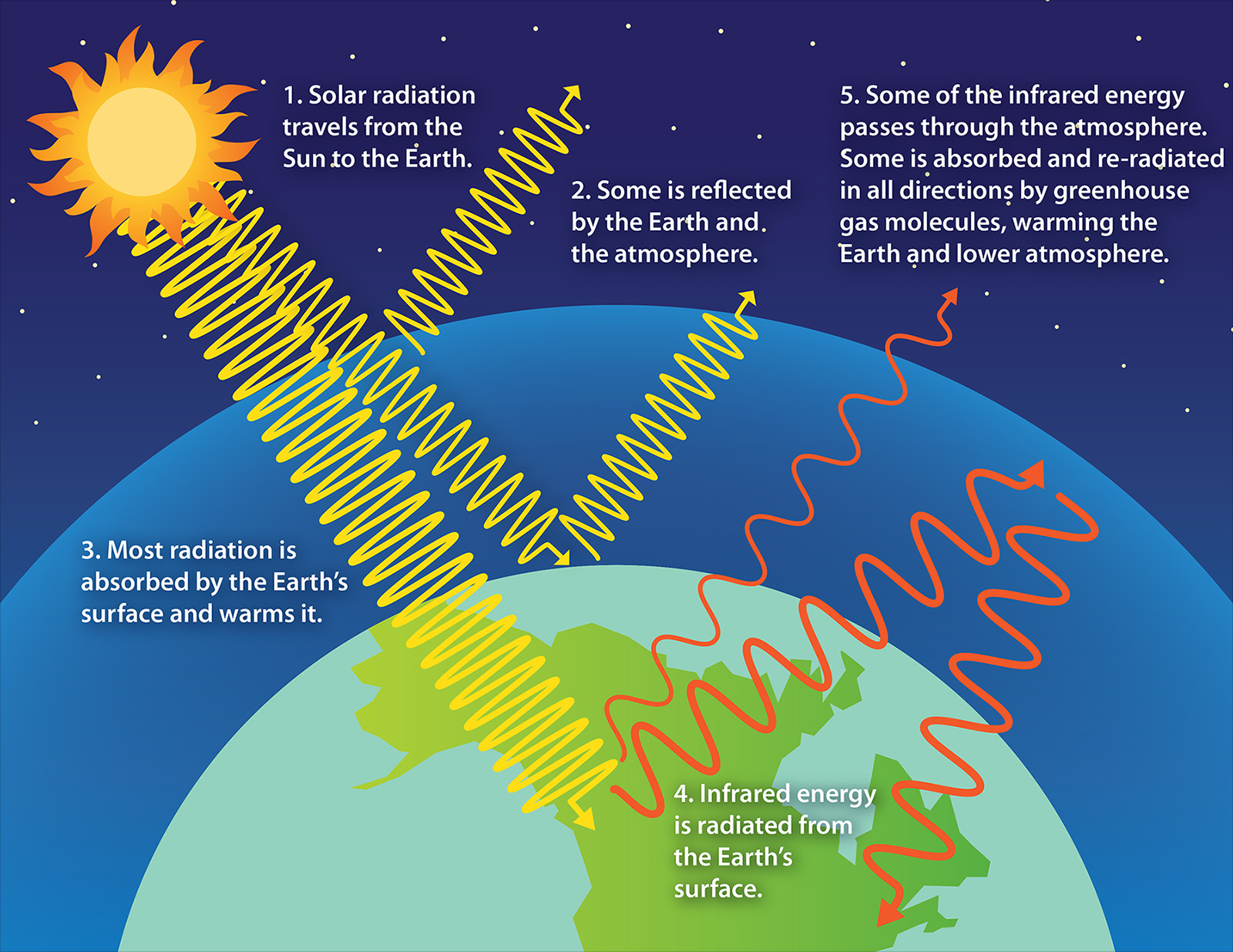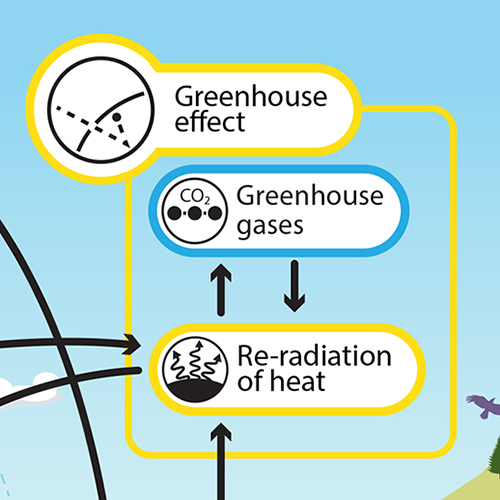Life as we know it would be impossible if not for the greenhouse effect, the process through which heat is absorbed and re-radiated in that atmosphere. The intensity of a planet’s greenhouse effect is determined by the relative abundance of greenhouse gases in its atmosphere. Without greenhouse gases, most of Earth’s heat would be lost to outer space, and our planet would quickly turn into a giant ball of ice. Increase the amount of greenhouse gases to the levels found on the planet Venus, and the Earth would be as hot as a pizza oven! Fortunately, the strength of Earth’s greenhouse effect keeps our planet within a temperature range that supports life
On this page
- What is the greenhouse effect?
- Earth system models about the greenhouse effect
- How human activities influence the greenhouse effect
- Explore the Earth system
- Investigate
- Links to Learn More
For the classroom:

Global Change Infographic
The greenhouse effect occurs in the atmosphere, and is an essential part of How the Earth System Works. Click the image on the left to open the Understanding Global Change Infographic. Locate the greenhouse effect icon and identify other topics that cause changes to, or are affected by, the greenhouse effect.
What is the greenhouse effect?

Adapted from the Environmental Protection Agency greenhouse effect file
Greenhouse gases such as methane, carbon dioxide, nitrous oxide, and water vapor significantly affect the amount of energy in the Earth system, even though they make up a tiny percentage of Earth’s atmosphere. Solar radiation that passes through the atmosphere and reaches Earth’s surface is either reflected or absorbed. Reflected sunlight doesn’t add any heat to the Earth system because this energy bounces back into space.
However, absorbed sunlight increases the temperature of Earth’s surface, and the warmed surface re-radiates as long-wave radiation (also known as infrared radiation). Infrared radiation is invisible to the eye, but we feel it as heat.
If there were not any greenhouse gases in the atmosphere, all that heat would pass directly back into space. With greenhouse gases present, however, most of the long-wave radiation coming from Earth’s surface is absorbed and then re-radiated in all directions many times before passing back into space. Heat that is re-radiated downward, toward the Earth, is absorbed by the surface and re-radiated again.
Clouds also influence the greenhouse effect. A thick, low cloud cover can enhance the reflectivity of the atmosphere, reducing the amount of solar radiation reaching Earth’s surface, but clouds high in the atmosphere can intensify the greenhouse effect by re-radiating heat from the Earth’s surface.
Altogether, this cycle of absorption and re-radiation by greenhouse gases impedes the loss of heat from our atmosphere to space, creating the greenhouse effect. Increases in the amount of greenhouses gases will mean that more heat is trapped, increasing the amount of energy in the Earth system (Earth’s energy budget), and raising Earth’s temperature. This increase in Earth’s average temperature is also known as global warming.
Earth system models about the greenhouse effect
This Earth system model is one way to represent the essential processes and interactions related to the greenhouse effect. Hover over the icons for brief explanations; click on the icons to learn more about each topic. Download the Earth system models on this page. There are a few ways that the relationships among these topics can be represented and explained using the Understanding Global Change icons (download examples).
The greenhouse effect, which influences Earth’s average temperature, affects many of the processes that shape global climate and ecosystems. This model shows some of the other parts of the Earth system that the greenhouse effect influences, including the water cycle and water temperature.
How human activities influence the greenhouse effect
Humans directly affect the greenhouse effect through activities that result in greenhouse gas emissions. The Earth system model below includes some of the ways that human activities increase the amount of greenhouse gases in the atmosphere. Releasing greenhouse gases intensifies the greenhouse effect, and increases Earth’s average air temperatures (also known as global warming). Hover over or click on the icons to learn more about these human causes of change and how they influence the greenhouse effect.
Explore the Earth system
Click the scene icons and bolded terms on this page to learn more about these process and phenomena.
Investigate
Learn more in these real-world examples, and challenge yourself to construct a model that explains the Earth system relationships.
